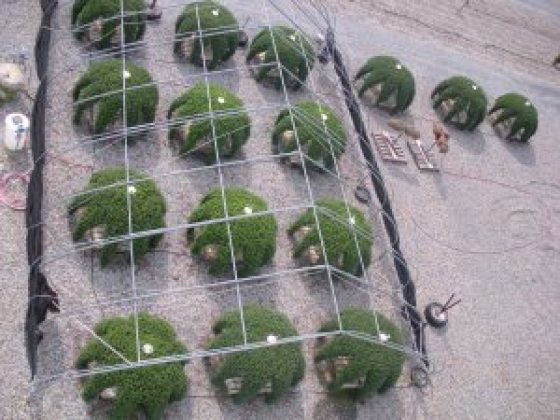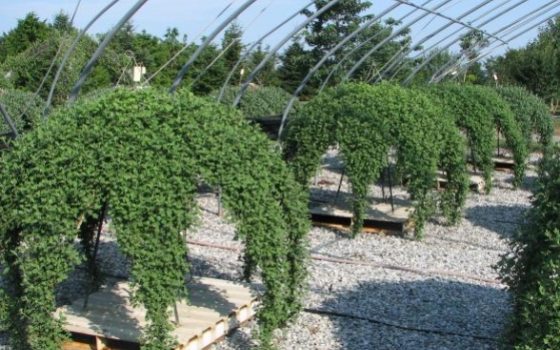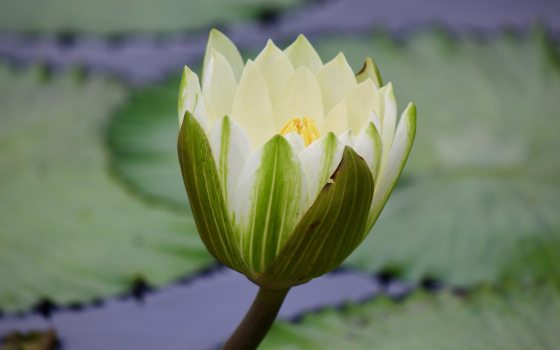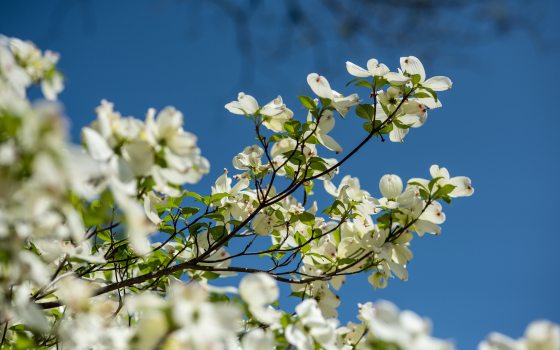Cascade chrysanthemums have long been at the heart of Longwood Gardens’ annual Chrysanthemum Festival. Longwood grows specialty mums (Chrysanthemum x moriflorum) that originated in China and Japan and are selected for their ability to create beautiful and lasting forms. Over the years, Longwood’s amazing show of form and color has been continually modified and refined. Guests marvel at the captivating shapes and often ask us how we create these wonderful pieces of horticulture. The following is meant to highlight a little behind-the-scenes action and hint at some of the spectacular forms you will see this November in our Conservatory.
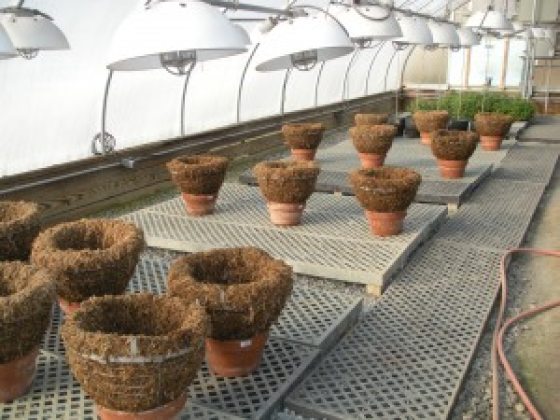
Beginning 15 months before the display date, the design team, in conjunction with the grower, makes final chrysanthemum cultivar choices for the following year. Stock plants—from which we take all of our final plants—are created in order to bulk up on material. In mid-December the final plants are started as small cuttings. We begin heavy fertilization using 20-10-20 [Nitrogen-Phosphorous-Potassium] twice a day for vigorous growth, with occasional feedings of Calcium/Magnesium for added strength. Chrysanthemums bloom when daylight hours total 12 or less. For this reason, between late July and April, we provide lighting in the form of 4 hours of night interruption in order to trick the mums into a continuous vegetative growth cycle. Any basic light source would work. We use compact florescent light bulbs overhead with a timer to keep them on between the hours of 10PM-2AM.
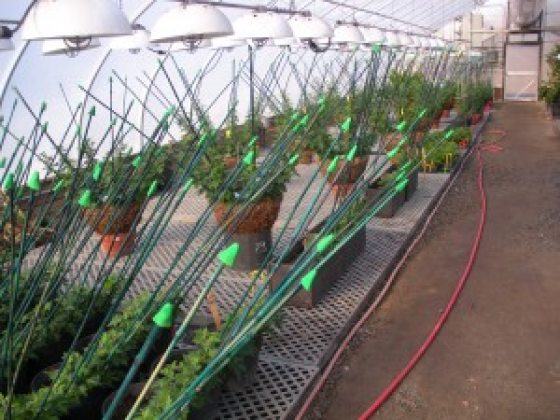
It’s the grower’s job to continually groom and train the plant according to its final design shape. In order to do so, we employ a number of methods. Foremost among these is pinching—a process by which certain growing tips are removed so that the plant sends out lateral growth. This is critical in the work we do because it increases the density of the plant. The more plant material we have, the greater the number of flowers. And make no mistake: it’s all about the flowers!
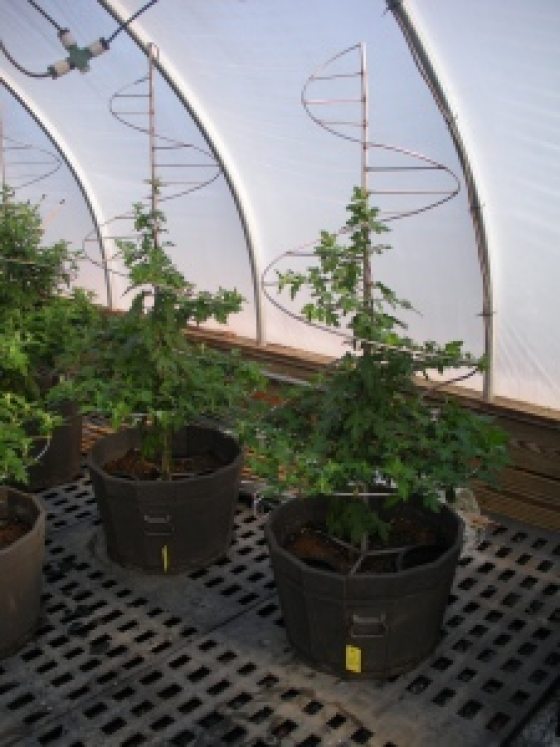
The cultivar 'Gum Drop' is trained up along a spiral frame. The wooden containers are not yet completely filled with soil. At this stage, each spiral forms take about 45 minutes a week to train. Within a month, training each spiral will take a minimum of 90 minutes. Another routine grooming method is stem-breaking. This ultra-meticulous method makes almost everyone nervous because it seems as if you're on the verge of snapping the plant in half. But with practice and patience anyone can do it!

On particular designs—take spirals for instance—branches coming off of the main stem need to be bent sharply in order to conform to the frame. To accomplish this, we first wilt the plants. Then, using both hands, and without rupturing the surface layers, we break the internal structure of the plant in many parts. The resulting flexibility is often enough to get the branch going in the right direction. The plant is then set to the frame with wire and watered. Within hours the plant has mended with no lasting damage! An identical method is used to make our cascade curtain and basket forms fit to their final shape. In those cases, each plant is bent 130 degrees—the most severe manipulation possible without creating lasting damage. Stem breaking is used throughout the entire vegetative growing season.
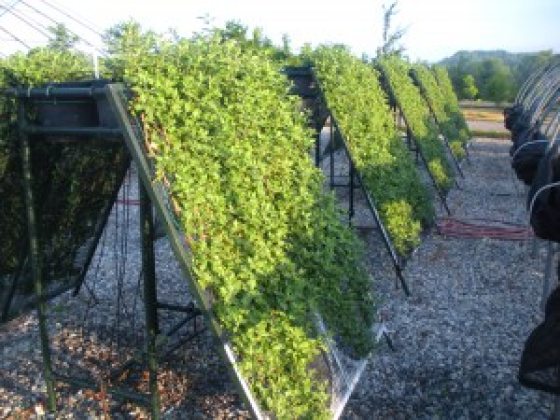
Pinching tips, tying down shoots, and leaf removal take place everyday. Each wing takes about 2 hours to groom a week. This year we have 104 basket wings. Hanging column cascade forms are grown and finished on these support structures. In October they are lifted off the frame and displayed without any structural support. The cultivar shown is 'Megumi'. Weekly grooming takes about 90 minutes for each pot. This year we will 54 column cascades.
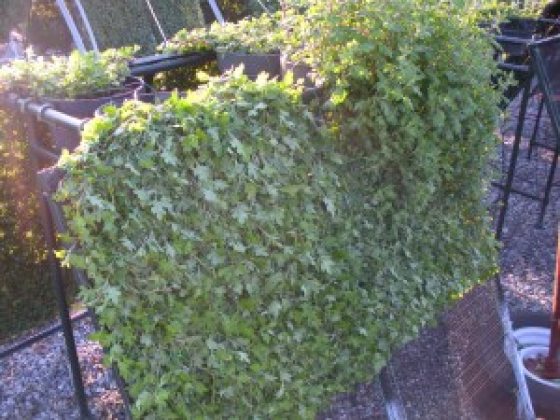
By late May the plants, now half their finished size, are brought to our outdoor growing area where they are potted up into their final growing containers. Once in the mum field, the most intensive work begins. A dedicated crew of 6 people—each chosen for their attention to detail and patience—along with students and volunteers, work non-stop during the summer grooming and caring for each shape. Without the help of this core group of people, the cascade mums would simply never reach such a high level of refinement. The goal is be able to groom each plant every ten days. Go beyond ten days and the plant becomes, shall we say, unruly and quite shaggy.
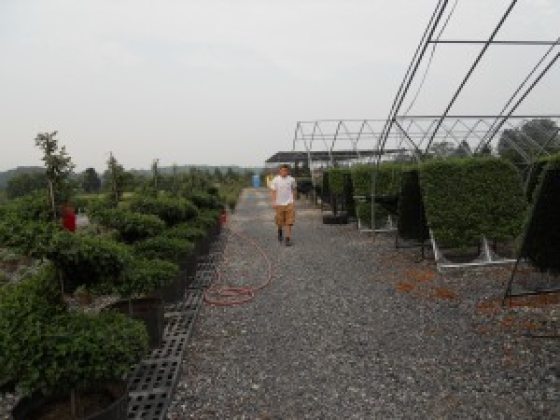
For the Longwood Gardens 2010 Chrysanthemum Festival (November 1–21), we have a few new and unusual additions. We are growing a pair of 11-foot-high arches to complement the Music Room doors on the main stage. Another first this year: A giant chandelier of cascading mums suspended high above the Fern Floor. Additionally, we’ll have a large number of spiral forms whose graceful curves will add an elegant twist to the Exhibition Hall floor in the Conservatory.
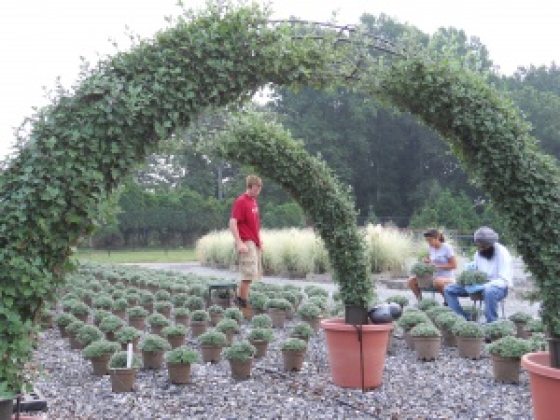
Students and employees work side-by-side pinching Chrysanthemum pacificum while two large arch tops await grooming. The arches have only 3 plants growing up each side. Seen from above, you can get an idea of scale of the unfinished baskets. With wings open, each one measures nearly 7' across. The metal structure surrounding the baskets is for shade cloth which allows me to protect both the plant and the people working beneath from the blazing summer sun. Stay tuned for Part II of this blog in early autumn when I’ll share the progress of this year's cascade mums!
